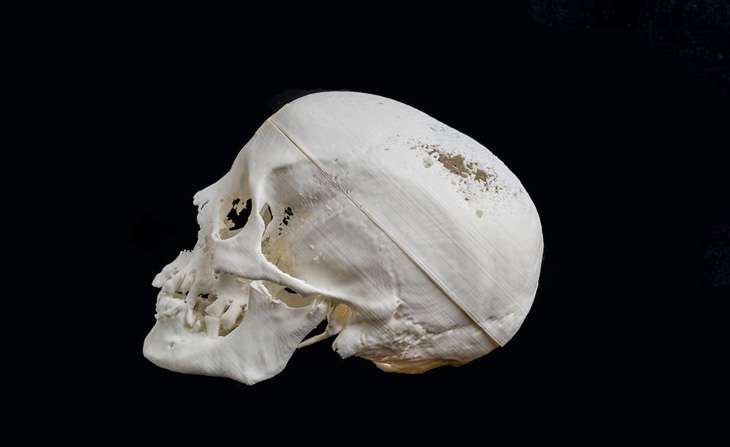Watch how scientists reconstructed the face of a 2,300-yr-old mummy

What did a 2300-year-old female Egyptian mummy look like before death ? By reconstructing the face of an Egyptian mummy using the latest in technology, a group of Australian researchers now know the answer. And, while she looks nothing like Patricia Velásquez , she definitely looks regal. Her name? Meritamun.
In what seems like a bizarre twist, the mummified head was actually discovered by accident in the collections of the University of Melbourne in Australia. A curator chanced upon the remains during an audit and decided to send it for a computed tomography(CT) scan.
"Turns out, [the skull] is actually quite intact; it has got bandages and looks well on the inside," said Varsha Pilbrow, biological anthropologist at the University of Melbourne's Department of Anatomy and Neuroscience, to LiveScience . "Of course, that then allowed us to think what to do next."

Here's what Pilbrow and her team did - with the help of an imaging specialist they used the scans to create a 3D-printed replica of the mummy's skull. Next, they studied the specimen's facial-bone features, such as the size and angle of the jaw and characteristics of the eye sockets - this helped establish the fact that it was a female specimen. According to the researchers she was probably not more than 25 years old at the time of her death. "It is quite fascinating that we did all of this without destroying the specimen in any way, and that is important from a museum curatorial point of view," Pilbrow said.
But how exactly did a mummified Egyptian head land up in a basement at the University of Melbourne? The most likely explanation is that the specimen was a part of the collection of Professor Frederic Wood Jones (1879-1954). Before Jones was Head of Anatomy at the University, he had undertaken archaeological survey work in Egypt.
Talking about the discovery, parasitologist and museum curator Dr Ryan Jefferies said in a statement that, "The CT scan opened up a whole lot of questions and avenues of enquiry and we realised it was a great forensic and teaching opportunity in collaborative research."
Collaboration has definitely been a key factor. First off, it took 140 hours of printing time on a regular consumer-level 3D printer to develop the skull used to subsequently reconstruct Meritamun's face. 3D printers usually build from the bottom up and the detailing is more towards the top. This aspect of the production was handled by the Department of Anatomy and Neuroscience's imaging technician Gavan Mitchell, who had to print out the skull out in two sections in order to effectively record details of the jaws and the base of the skull.
" It has been a hugely rewarding process to be able to transform the skull from CT data on a screen into a tangible thing that can be handled and examined," said Mitchell.
Once the skull was ready, it formed the base on which sculptor Jennifer Mann used her skills as a forensic scientist and artist to reconstruct Meritamun's face. "It is incredible that her skull is in such good condition after all this time, and the model that Gavan produced was beautiful in its details," Mann said.
The procedure itself was very intricate. Plastic markers were attached to the printed skull to represent different tissue depths at key points on the face, based on averages in population data. Next, clay was applied according to the musculature of the face and anatomical ratios based on the actual skull to give it a better finish. Right now, Meritamun is kept in a customised archival container at the Harry Brookes Allen Museum of Anatomy and Pathology, in the School of Biomedical Sciences.
Janet Davey, a forensic Egyptologist based at the Victorian Institute of Forensic Medicine, where the head was scanned sums it up best when she says: "by reconstructing her we are giving back some of her identity, and in return she has given this group of diverse researchers a wonderful opportunity to investigate and push the boundaries of knowledge and technology as far as we can go".
Also Reads -
Jurassic Park in India; MP to get country's second dinosaur fossil park soon
A 120 million-year-old insect wing has something to say about China






![BJP's Kapil Mishra recreates Shankar Mahadevan’s ‘Breathless’ song to highlight Delhi pollution [WATCH] BJP's Kapil Mishra recreates Shankar Mahadevan’s ‘Breathless’ song to highlight Delhi pollution [WATCH]](https://images.catchnews.com/upload/2022/11/03/kapil-mishra_240884_300x172.png)

![Anupam Kher shares pictures of his toned body on 67th birthday [MUST SEE] Anupam Kher shares pictures of his toned body on 67th birthday [MUST SEE]](https://images.catchnews.com/upload/2022/03/07/Anupam_kher_231145_300x172.jpg)






